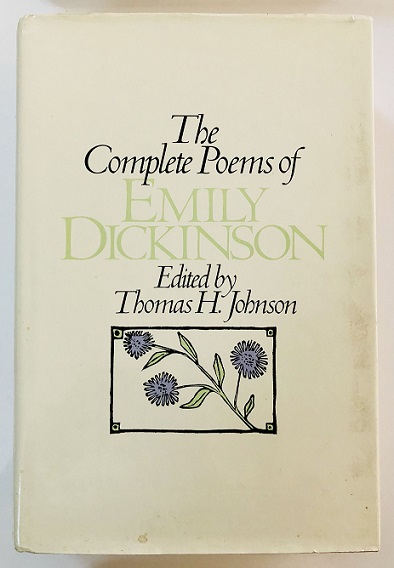|
home | what's new | other sites | contact | about |
||
|
Word Gems exploring self-realization, sacred personhood, and full humanity
Emily Dickinson No Man can compass a Despair (#477)
Emily Dickinson (1830-1886)
No Man can compass a Despair—
from https://beamingnotes.com/2016/10/20/summary-analysis-no-man-can-compass-despair/ No Man can Compass a Despair is a poem by Emily Dickinson which discusses the nature of despair. It compares a man trying to understand despair to a traveler trying to cover a goalless circular road. A line by line summary is provided followed by an analysis of the poem. Line By Line Summary The poet begins by stating, that it is not possible for any man to completely comprehend despair. Despair refers to the complete absence of hope. ‘Compass’, in this case, is used as a verb meaning to understand or comprehend. But why can a man not understand despair? The poet offers an explanation in the next few lines. We are provided the image of a traveler moving along a ‘goalless path’. The poet uses the phrase “As round a goalless road”, implying that this road is circular and has no real end, which adds to the theme of despair. But does the traveler know this? No, he doesn’t. For he is unable to take in the entirety of the road in a single instant. He can only take in one mile at a time. So the traveler keeps going mile by mile to what is believes is the end of the road. This traveler is unaware that the road has no end. So he is unaware of the total distance he needs to cover. As he proceeds along the road, he is oblivious to the fact that the sun is setting. He will soon run out of natural light and it will difficult for him to keep moving. But the traveler has not judged the length of the road accurately. He believes that he will be able to cover the distance soon. The next two lines “So accurate the One/ At estimating Pain”, appear to be sarcastic in nature. The poet is commenting on Man’s confidence on being able to comprehend despair. Just like the traveler, who lacks the idea of the road’s true nature, a man in despair is not able to understand the true extent of his pain at first glance. The poet adds that this man is only starting to get an idea of the pain he would have to deal with. All the more reason why he would be unable to comprehend the entirety of it. In the final two lines, the poet says that the driving force in both cases, the traveler and a man in despair, is ignorance. Since they are not aware of the true extent of things, they allow their ignorance to lead them ahead thinking that they will soon reach their destination. For the traveler, it would be the end of the road, for the man in despair, it would be completely understanding and overcoming his despair. The poet imagines this ignorance as an Angel that guides them ahead. Analysis and Critical Comments. In this poem, Emily Dickinson, makes a powerful statement in the very first line: “No Man can compass a Despair—“ Perhaps she implies that despair is, by its very nature, so vast and so utterly damaging, that no man can completely comprehend it. Often when a man feels like he has managed to comprehend despair, he has merely scratched the surface. The poet uses the traveler on a goalless road as a metaphor for such a man. The traveler being unaware about the exact nature of the road keeps on moving. He, however is only able to take the road one mile at a time. So he thinks that he is reaching somewhere. If he were to take in the entire road at once, he would be able to realize that it was a goalless road, possibly a large circle. So, the road, in essence, is devoid of a real end. In both cases, it is ignorance that is driving them ahead. In actuality, Neither the traveler nor the man in despair have any clear idea of the end points, but are moving ahead nonetheless, believing that they will soon complete their physical and mental journeys, respectively. Interestingly, the poet calls this ignorance, an angel that pilots them along. Normally, angels are associated with positive attributes. But here we have ignorance being referred to as an angel. Or is the ignorance, in this case, really a negative factor? Perhaps, it is the ignorance that offers hope. Perhaps, the man in despair can continue to live his life with some normalcy, because he is being driven by ignorance. Without this ignorance, he would fall into a spiral of hopelessness. So maybe, the angel is a benign influence, after all. The poet makes extensive use of juxtaposition in this poem. Right from the beginning, the poet is successful in invoking two interesting images side by side- a man trying to comprehend despair, or the extent of it, and a traveler moving ‘round a goalless road’. This juxtaposition of the mental and the physical, makes this poem remarkable and offers us an easy way to visualize the nature of despair.
1775 poems
|
||
|
|

